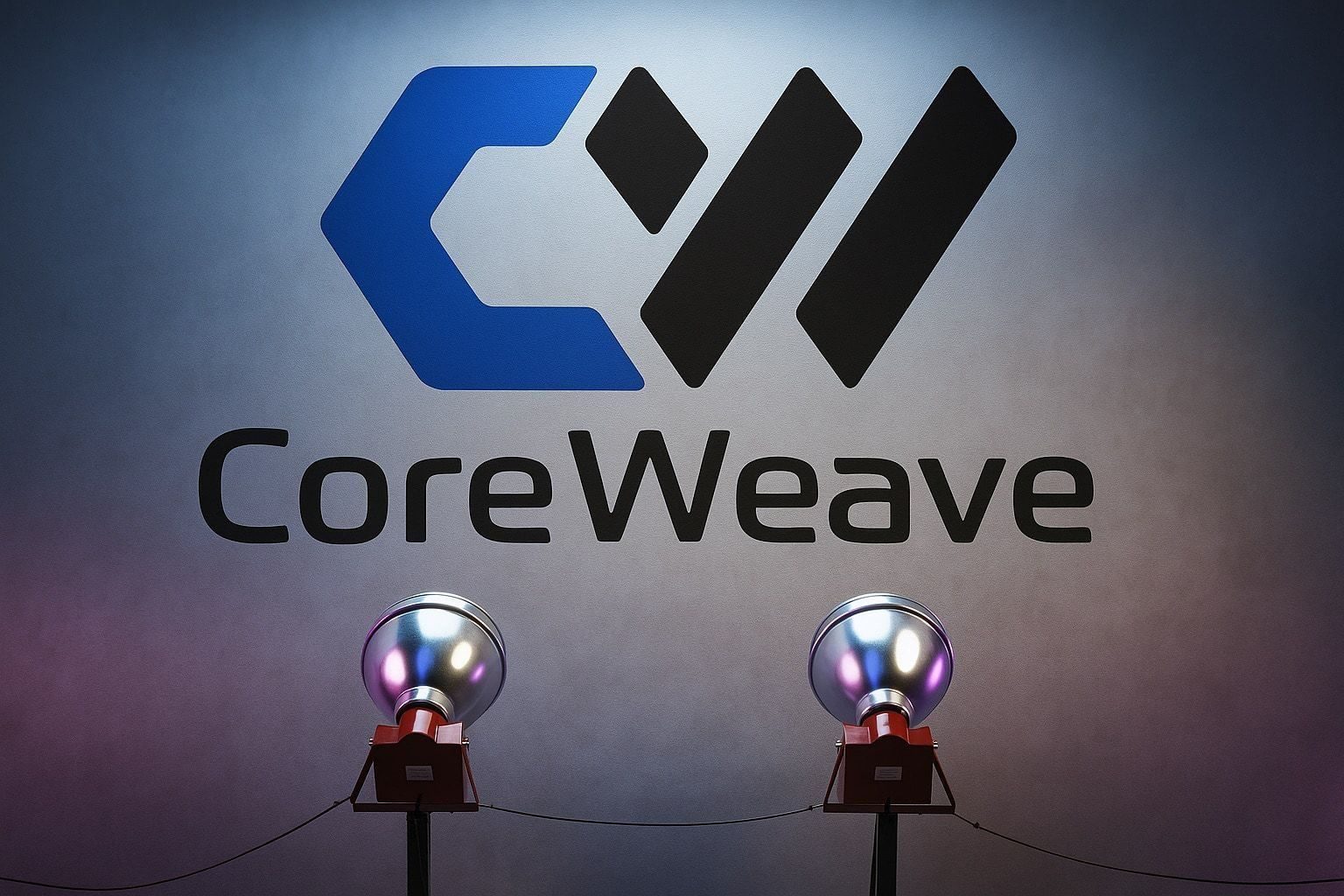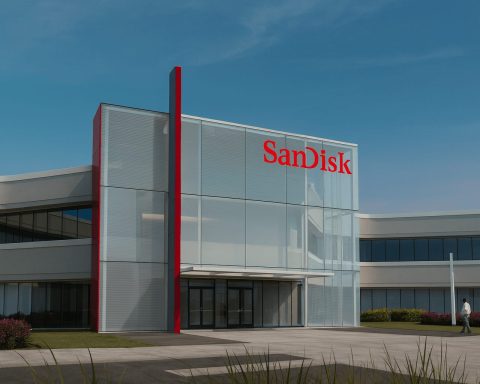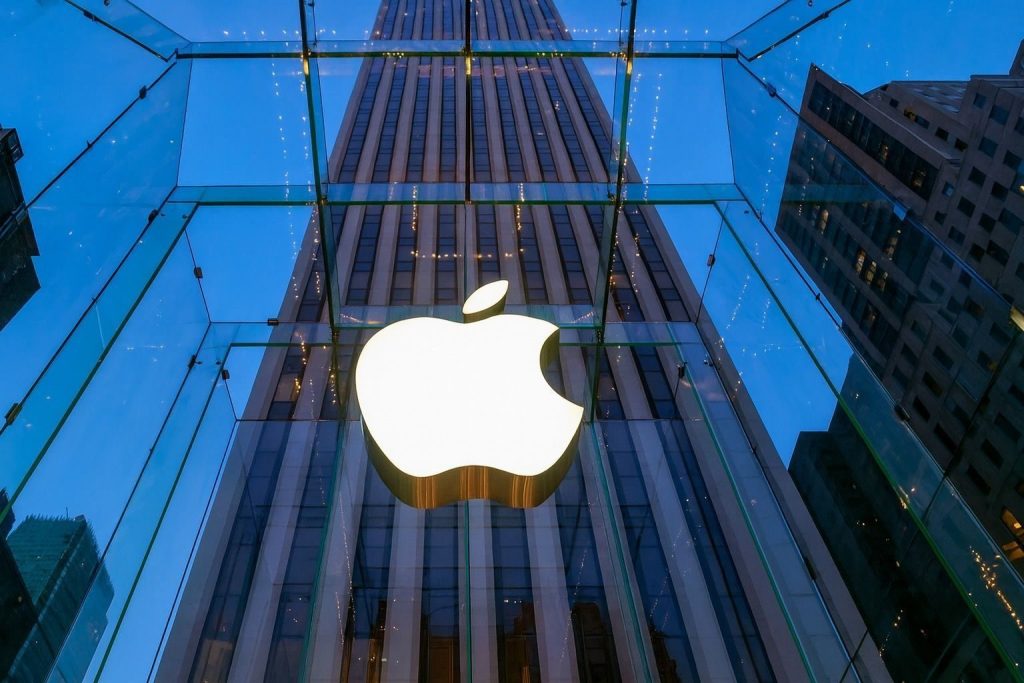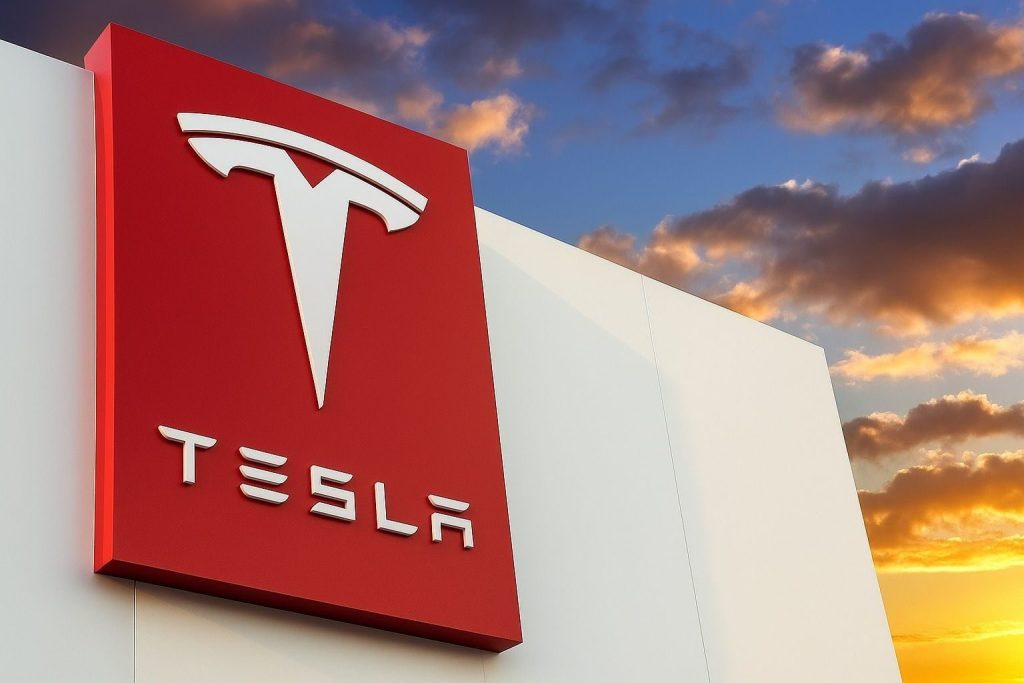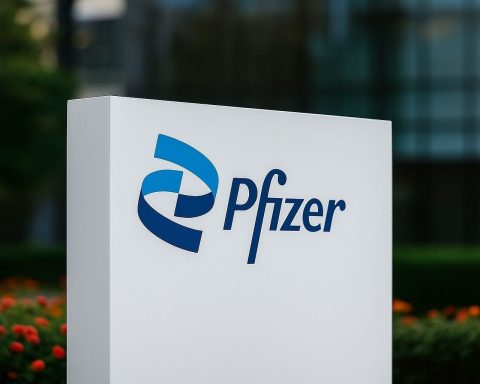CoreWeave Inc. (NASDAQ: CRWV) enters the shortened Black Friday trading session as one of Wall Street’s most closely watched artificial intelligence infrastructure stocks — and one of its most volatile.
After a bruising November marked by a guidance cut, data‑center delays and aggressive insider selling, fresh research and ownership disclosures published on November 28, 2025 are reshaping the conversation around CoreWeave stock. Long-term forecasts, new institutional buyers and renewed scrutiny of the company’s debt load are all in focus today. [1]
CoreWeave stock price heading into the Black Friday session
As the U.S. market reopens for a half‑day session following Thanksgiving, CoreWeave stock is trading just above the mid‑$70s:
- Last regular close (Wednesday, Nov. 26, 2025): $74.29, up about 4.2% on the day, after trading between roughly $72.85 and $76.60. [2]
- Pre‑market indication this morning (Nov. 28): around $75.50, about 1.6% above that close. [3]
- Market cap: roughly $38 billion. [4]
- 52‑week range: about $33.52 to $187.00 – meaning shares sit roughly 60% below their 2025 peak but still well above the $40 IPO price from March. [5]
Even by AI‑stock standards, CRWV’s swings have been extreme. From its June highs near $187, the stock has more than halved, then bounced from the low‑$60s to the mid‑$70s in under a month, with daily moves of 5–15% becoming routine. Recent historical data show multi‑million‑share volumes every session and double‑digit percentage moves around earnings and guidance updates. [6]
Earnings rewind: huge growth, trimmed guidance and a data‑center delay
CoreWeave’s latest quarterly report on November 10 set the stage for today’s debate. For the third quarter of 2025 (ended September 30), the company reported: [7]
- Revenue: about $1.36 billion, up ~134% year over year from roughly $584 million.
- Net loss:$110 million, significantly narrower than the ~$360 million loss a year earlier.
- Net margin: still negative at around ‑8%, despite strong revenue growth.
- Adjusted EBITDA: roughly $838 million, with an EBITDA margin of about 61%.
- Revenue backlog:$55.6 billion in contracted future business.
The Q3 press release highlighted:
- A multi‑year deal with Meta Platforms worth up to about $14.2 billion.
- An expanded OpenAI relationship with an additional $6.5 billion commitment, bringing total OpenAI commitments to roughly $22.4 billion.
- Contracted power capacity of about 2.9 gigawatts, with ~590 megawatts already active. [8]
However, the market fixated on guidance. In its earnings commentary, management cut 2025 revenue guidance to a range of approximately $5.05–$5.15 billion, down from a prior range of $5.15–$5.35 billion and below analyst expectations around $5.29 billion. The company blamed a delay at a third‑party data‑center developer that slowed ramp‑up at one facility, even as the underlying customer extended the contract to preserve its full value. [9]
Shares fell more than 6% in after‑hours trading on the guidance cut and have remained volatile ever since, with one stretch seeing the stock down nearly 30% in five trading days despite strong reported demand and multi‑billion‑dollar contracts. [10]
Fresh headlines on November 28: five‑year scenarios and institutional flows
1. “Where Will CoreWeave Stock Be in 5 Years?” – Nasdaq / The Motley Fool
In a new piece syndicated on Nasdaq early this morning, Motley Fool analyst Adria Cimino lays out a five‑year scenario for CoreWeave. The article notes that: [11]
- The stock surged more than 300% in the three months after its March IPO before giving back a large portion of those gains.
- Demand for GPU compute remains extraordinarily high, and CoreWeave has positioned itself as a specialist AI cloud, renting Nvidia GPUs rather than trying to compete as a general‑purpose cloud like Amazon or Microsoft.
- Nvidia owns roughly 7% of CoreWeave and relies on it as a key channel for advanced architectures such as Blackwell and GB300.
Using analyst forecasts that call for annual revenue around $18 billion in 2027, the article sketches a scenario where CoreWeave’s stock could reach roughly $320 if the market continues to value it at about 6.9 times sales – more than a 400% gain from current levels. Cimino stresses this is an illustrative case, not a prediction, and that any slowdown in AI infrastructure spending or macro shock could derail it. [12]
2. AInvest: “Is CoreWeave (CRWV) a Buy for the Long-Term?”
Another piece published today by AInvest takes a more explicitly risk‑balanced view. It argues that: [13]
- CoreWeave’s AI‑infrastructure opportunity is “massive,” thanks to GPU‑optimized cloud offerings and marquee clients.
- The growth is heavily financed with debt, which could become a serious problem if revenue growth slows, capital markets tighten, or AI demand disappoints.
- Long‑term investors need to judge whether management can execute efficiently enough that the leverage becomes an advantage rather than a liability.
The article’s bottom line is that CoreWeave is a high‑risk, high‑reward stock, appropriate only for investors who can tolerate the possibility of sharp drawdowns or a debt‑driven setback.
3. Simply Wall St: CoreWeave among “Top Growth Companies With Strong Insider Confidence”
A new screening note from Simply Wall St, also dated November 28, places CoreWeave on a list of U.S. growth companies with high insider ownership. For CRWV, the note highlights: [14]
- Estimated insider ownership of about 26.9%.
- Trailing revenue growth of roughly 235% over the past year.
- A forecast revenue growth rate of around 41% per year, well above the broader U.S. market.
- Recent insider transactions skewing slightly more toward buying than selling over the most recent measurement window, despite the stock’s volatility.
At the same time, the report cautions that valuation screens suggest CoreWeave may already trade above some intrinsic value estimates, underscoring the tension between growth enthusiasm and pricing.
4. MarketBeat: new institutional buyers – and heavy insider selling
MarketBeat’s latest 13F‑based update, published this morning, spotlights fresh institutional positions in CoreWeave. Among the moves: [15]
- Universal Beteiligungs und Servicegesellschaft mbH disclosed a new stake of 3,500 shares, worth around $571,000.
- Cisco Systems opened a much larger position in an earlier quarter, valued at roughly $173.5 million, while several smaller funds and wealth managers also initiated positions.
But the same report underlines a stark contrast between institutional buying and insider activity:
- Chief technology officer Brian M. Venturo recently sold 281,250 shares, worth about $24.6 million.
- Over roughly the past three months, insiders collectively disposed of approximately 31.8 million shares, worth around $4.1 billion, as post‑IPO lockups expired and early backers took profits.
MarketBeat pegs CoreWeave’s current market cap around the high‑$20 billions in its snapshot and summarizes Wall Street’s view as a “Moderate Buy”, with an average analyst price target in the low‑$130s, implying sizable upside from the mid‑$70s. [16]
5. Structured products tied to CRWV price
A filing with the U.S. Securities and Exchange Commission shows that major banks are already designing structured notes linked to CoreWeave’s stock. A recent free‑writing prospectus outlines a leveraged, callable security whose performance is tied to the Class A common stock of CoreWeave, with a pricing date expected around November 28, 2025. [17]
These products are typically aimed at sophisticated investors and reflect growing demand for yield and leverage strategies specifically tied to CRWV’s volatility.
The bigger picture: AI boom, heavy leverage and bubble fears
While today’s headlines focus on five‑year upside scenarios and new institutional money, a parallel conversation centers on risk.
- A long investigative feature in The Verge earlier this month described CoreWeave as deeply indebted and heavily reliant on Nvidia, arguing that the company’s business model and funding structure make it a symbol of the AI‑infrastructure bubble. [18]
- That article points out that CoreWeave has raised billions of dollars using Nvidia GPUs as collateral, initially at interest rates near the mid‑teens before refinancing part of that debt into high‑single‑digit coupon loans. [19]
- It also underscores concentration risk: at various points, Microsoft accounted for a very large share of CoreWeave’s revenue, even as hyperscalers such as Microsoft, Google and Meta build their own AI data centers that could eventually compete with CoreWeave. [20]
Short‑selling research has been blunt. One hedge fund has called CoreWeave a poster child of AI‑infrastructure excess and argued that, once leverage and customer concentration are properly accounted for, fair value could be far below today’s price. [21]
On the other side, CoreWeave’s own Q3 release, along with bullish notes from firms like Seeking Alpha contributors and Barchart, emphasize: [22]
- A backlog above $55 billion backed by long‑term contracts with OpenAI, Meta and hyperscaler partners.
- Rapid expansion in power capacity and data‑center footprint across the U.S. and Europe.
- Improving adjusted profitability even as GAAP net income remains negative due to high interest expense and depreciation.
In Barchart’s analysis, Wall Street consensus forecasts see CoreWeave’s revenue climbing from roughly $5.1 billion in 2025 to around $28 billion by 2028, with the company swinging from a per‑share loss today to meaningful earnings later in the decade. Under a 30x forward‑earnings multiple in that scenario, Barchart estimates CRWV could gain around 70% over the next two years – but again stresses that this depends on sustained AI demand, timely data‑center build‑outs and manageable financing costs. [23]
Ownership and sentiment: big believers vs cautious skeptics
Institutional and ETF activity
Beyond today’s new 13F disclosures, ownership data from TipRanks show that: [24]
- Public companies and individual investors collectively hold the majority of the float, with insiders, ETFs and mutual funds making up the rest.
- Cathie Wood’s ARK Invest has repeatedly added to its CoreWeave stake this month, including purchases of roughly 396,000 shares on November 25 and another 437,000 shares around the same time through various ARK ETFs, even as the stock dropped nearly 50% from its highs.
- Large asset managers such as Vanguard also hold positions through index and growth funds.
Bridgewater’s contrarian buy
Yesterday’s report that Bridgewater Associates bought about 270,556 shares worth roughly $37 million intensifies the spotlight. The purchase came despite founder Ray Dalio’s recent warnings that AI stocks as a group are exhibiting classic bubble characteristics, with valuations running well ahead of fundamentals. Dalio’s view is more nuanced than a simple “sell everything” – he has emphasized the need for diversification and the likelihood that bubbles deflate only when a policy or macro shock hits – but the fact that his firm still saw an opportunity in CoreWeave is notable. [25]
Analyst ratings
Across various tracking services:
- CoreWeave currently carries an overall rating around “Moderate Buy” based on roughly two‑dozen analyst opinions. [26]
- Average 12‑month price targets cluster in the low‑to‑mid $130s, with some platforms quoting averages closer to the high‑$140s – implying potential upside of roughly 75–100% from the mid‑$70s share price, if those targets prove accurate.
- At the same time, the presence of at least one Sell or “Strong Sell” rating and sharply divergent targets reflect genuine disagreement about execution risk, leverage and AI demand durability. [27]
How CoreWeave stock looks today
Putting the November 28 news flow together, the CoreWeave story for investors and traders watching CRWV today can be summarized as follows:
- The bull case rests on explosive demand for AI compute, a $55+ billion backlog, marquee contracts with OpenAI and Meta, rapid revenue growth above 100% year‑over‑year, and backing from Nvidia and high‑conviction investors like ARK Invest and Bridgewater. [28]
- The bear case centers on heavy leverage, reliance on a small set of huge customers, execution risk around large data‑center projects, fierce competition from hyperscalers that may become direct rivals, and the possibility that today’s AI‑infrastructure boom is a classic speculative bubble. [29]
- Today’s fresh research adds more fuel to both sides: scenario analyses arguing for multi‑bagger potential over five years, screening tools highlighting strong growth and insider alignment, and institutional‑flow reports showing both big new buyers and aggressive insider selling at recent price levels. [30]
For now, CoreWeave stock sits in the middle of that tug‑of‑war: far off its euphoric highs, still well above its IPO price, and trading like a leveraged bet on the long‑term economics of AI data centers.
Disclaimer: This article is for informational purposes only and does not constitute investment advice, a recommendation to buy or sell any security, or an offer to provide investment services. Always do your own research or consult a licensed financial adviser before making investment decisions.
References
1. www.marketbeat.com, 2. www.investing.com, 3. www.google.com, 4. www.google.com, 5. www.google.com, 6. www.investing.com, 7. investors.coreweave.com, 8. investors.coreweave.com, 9. www.reuters.com, 10. coincentral.com, 11. www.nasdaq.com, 12. www.nasdaq.com, 13. www.ainvest.com, 14. simplywall.st, 15. www.marketbeat.com, 16. www.marketbeat.com, 17. www.sec.gov, 18. www.theverge.com, 19. www.theverge.com, 20. www.theverge.com, 21. www.theverge.com, 22. investors.coreweave.com, 23. markets.financialcontent.com, 24. www.tipranks.com, 25. markets.financialcontent.com, 26. www.tipranks.com, 27. www.tipranks.com, 28. investors.coreweave.com, 29. www.theverge.com, 30. www.nasdaq.com
